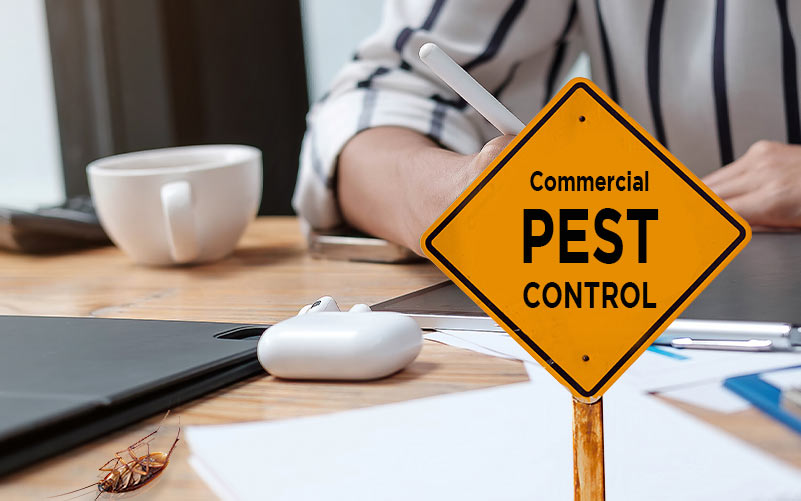Specialist A1 Charlotte Bed Bug Exterminator - Top Quality Solution Assured
Bed Pest Treatment Breakdown: Comparing Chemical Vs. Non-Chemical Solutions
In the realm of parasite control, specifically when taking care of the persistent issue of bed insects, the choice in between chemical and non-chemical treatment options can be a crucial one. Both techniques use unique benefits and drawbacks, influencing variables such as efficiency, safety and security considerations, and overall expense. By taking a look at the nuanced details of each technique, a more clear understanding of which course to go after in attending to a bed bug invasion can be attained.
Performance of Chemical Therapies
Chemical therapies for bed pest infestations have been extensively identified for their rapid and potent effectiveness in removing these parasites. When considering the efficiency of chemical therapies, it is essential to comprehend that they can supply a extensive and quick service to a bed bug problem. Professional pest control specialists usually depend on insecticides to target bed insects at various stages of their life cycle, consisting of grownups, eggs, and nymphs. These chemicals usually work by interrupting the bed pests' nerve system, bring about paralysis and ultimate fatality.
Furthermore, chemical treatments have the advantage of offering recurring effects, implying that they can continue to get rid of bed bugs also after the preliminary application. This residual activity is especially advantageous in combating any kind of possible re-infestations. Furthermore, the rapid activity of chemical treatments can bring relief to individuals dealing with serious bed pest invasions, permitting them to regain control of their living rooms rapidly.
Security Interest In Chemical Solutions
One essential element that needs mindful consideration when utilizing chemical services for bed pest treatment is guaranteeing the safety of occupants and the environment. While chemical therapies can be reliable in getting rid of bed bugs, they may pose risks otherwise handled appropriately. Among the main security worry about chemical remedies is the potential harm they can create to human wellness. Direct exposure to certain chemicals used in bed bug therapies can cause respiratory problems, skin irritation, or other adverse responses, especially in individuals with pre-existing problems or level of sensitivities. In addition, incorrect application or dose of chemical pesticides can cause hazardous residues lingering in the cured location, posturing lasting health and wellness risks to occupants.
Furthermore, the ecological effect of chemical remedies is another significant consideration. Some pesticides made use of in bed bug therapies may be dangerous to helpful insects, wild animals, and communities if they seep right into the soil or water systems. It is necessary to make use of chemical therapies judiciously, adhering to safety guidelines, and thinking about much less poisonous alternatives to alleviate these click dangers and make certain the reliable and safe administration of bed pest infestations.
Benefits of Non-Chemical Strategies
Considering the possible safety and security concerns and environmental effect associated with chemical remedies for bed pest treatment, discovering non-chemical strategies provides an appealing choice with a number of unique advantages. Non-chemical therapies are ecologically pleasant, as they do not contribute to air or water air pollution, making them a sustainable option for insect control.
Additionally, non-chemical solutions can be efficient in targeting bed pests, consisting of hard-to-reach locations where chemical therapies may not penetrate - A1 pest control charlotte nc bed bugs. Methods such as warmth treatment, vacuuming, steam cleansing, and cushion coverings supply thorough elimination without the use of harmful chemicals.
Limitations of Non-Chemical Treatments

In addition, non-chemical treatments often need several applications to accomplish successful eradication. This can be taxing and might not always guarantee total removal of all bed pests and their eggs, specifically in covert or Going Here hard-to-reach locations.
Furthermore, the success of non-chemical therapies heavily depends on appropriate application and thoroughness, which can be challenging for individuals without professional knowledge. Insufficient application of non-chemical approaches may cause insufficient removal, causing persistent invasions and the need for extra treatments.
For that reason, while non-chemical treatments have their benefits, it is necessary to recognize these limitations and consider them when determining one of the most reliable technique for managing bed insect infestations.
Expense Comparison: Chemical Vs. Non-Chemical Options
Offered the restrictions linked with non-chemical treatments, an essential element to review in the context of bed bug monitoring is the cost contrast between chemical and non-chemical choices. In comparison, non-chemical therapies like warmth treatment or vapor can be much more pricey, with costs ranging from $1,000 to $6,000 for a whole home. While the initial expense of chemical therapies may seem reduced, multiple treatments might be required to completely eliminate the problem, potentially raising the general cost.
Conclusion

Taking into consideration the potential safety worries and ecological influence linked with chemical services for bed pest therapy, discovering non-chemical methods offers a promising alternative with a number of distinctive benefits.Provided the constraints associated with non-chemical treatments, an important facet to assess in the context of bed pest monitoring is the cost comparison between chemical and non-chemical choices. In comparison, non-chemical treatments like heat treatment or heavy steam can be a lot more expensive, with expenses ranging from $1,000 to $6,000 for an entire home. While the preliminary expense of chemical treatments might appear reduced, numerous therapies might be called for to completely get rid of the problem, possibly raising the total price.In final thought, Going Here when comparing chemical and non-chemical bed insect therapy options, it is important to think about efficiency, security, benefits, limitations, and cost.